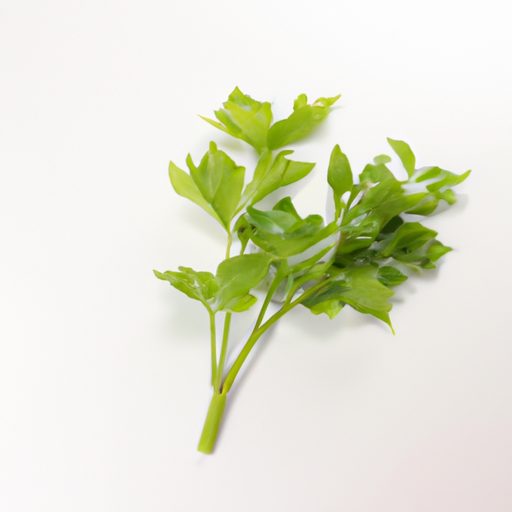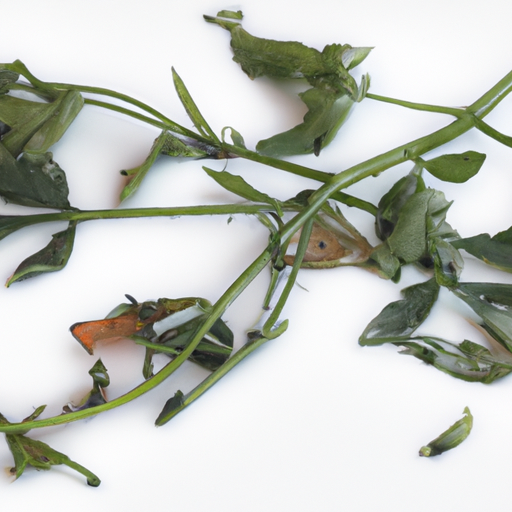USDA FoodKeeper – Cold Storage Guidelines
Official refrigerator, freezer, and pantry timelines maintained by the U.S. Department of Agriculture.
Visit USDA FoodKeeperOften overlooked, this aromatic herb brings a unique flavor reminiscent of celery to your dishes, making it a delightful addition to soups and salads. However, to fully enjoy its fresh taste and benefits, proper storage is key—keep it in the fridge and use it within a week for optimal safety and flavor.


Fridge
32°F to 40°F
Wrap in a damp paper towel, place in a plastic bag, and refrigerate
7 days
Yellowing leaves, slimy texture
Use leaves in salads, soups, or season broths. Roots can be eaten as a vegetable or grated for salads. Seeds can be used as a spice.
Celery leaves or parsley can be used as substitutes.
Oh, Lovage! What a delightful herb! Let's talk about expiration dates versus best quality when it comes to Lovage. Expiration dates are more about safety. Consuming Lovage after its expiration date might not be the best idea as it could potentially be harmful. On the other hand, best quality refers to the peak flavor and freshness of the Lovage. For example, if your Lovage has reached its expiration date, it's best to discard it. However, if it's past the best quality date, it might have lost some of its flavor potency but could still be safe to consume, especially if you're cooking it in a dish where the subtleties of the Lovage won't be crucial. Personally, I tend to be a bit cautious with herbs like Lovage. I would probably discard it once it's past its best quality date, as I really enjoy the fresh, vibrant flavors herbs bring to dishes. But hey, if it still smells good and looks okay, a slightly aged Lovage might still work in a hearty soup or stew!
To check if Lovage has gone bad, look for wilting or browning leaves, a slimy or mushy texture, or a foul odor. Fresh Lovage should have vibrant green leaves, a crisp texture, and a strong, pleasant aroma. If it looks or smells off, it's best to discard it to avoid any potential food safety risks.
Hey there! Let's chat about Lovage and food safety. Lovage is a delicious herb that can elevate your dishes, but it's essential to be aware of potential foodborne illness risks. One common risk with fresh herbs like Lovage is contamination from bacteria like E. coli or Salmonella. Symptoms of foodborne illness can include stomach cramps, nausea, and diarrhea. If you experience these after consuming Lovage or any other food, it's crucial to seek medical attention. To keep your Lovage and other fresh ingredients safe, always make sure to wash them thoroughly before use. Store Lovage in the refrigerator and separate from raw meats to prevent cross-contamination. If you're harvesting Lovage from your garden, avoid using chemical pesticides or fertilizers near the plant. When in doubt, trust your instincts. If Lovage looks or smells off, it's better to be safe than sorry. Enjoy your culinary adventures with Lovage, but always prioritize food safety for a happy and healthy dining experience!
Hey there! Lovage is a versatile herb that can add a lovely flavor to your dishes. When it comes to storing lovage, here are some practical tips and hacks for you: 1. **Wrapping in Damp Paper Towel**: To keep lovage fresh for longer, wrap the stems in a damp paper towel before storing in the fridge. This helps maintain its moisture and crispness. 2. **Freezing in Ice Cubes**: Chop lovage leaves finely and freeze them in ice cube trays with a little water or oil. This way, you can easily pop out a cube when you need it for soups or stews. 3. **Drying for Later Use**: Tie lovage stems together and hang them upside down in a well-ventilated area to dry. Once dried, crumble the leaves into an airtight container for future use. 4. **Making Lovage Salt**: Blend fresh lovage leaves with sea salt to create a flavorful lovage salt. Store it in a jar and use it as a seasoning for various dishes. I've personally found that freezing lovage in ice cubes works great for me, as I can easily grab a cube whenever I'm cooking. Give these tips a try and see what works best for your needs!
Hey there! Let's talk about Lovage, the herb that can add a real punch to your dishes. Did you know that lovage has been used since ancient times by the Romans and Greeks for its medicinal properties? It's like a blast from the past in your kitchen! One cool thing about lovage is that it's often called "love-ache," which comes from its Latin name, Levisticum officinale. The "ache" part refers to its celery-like flavor, which can be a game-changer in soups and stews. In some cultures, lovage is not just a herb but a symbol of love and commitment. In the Victorian language of flowers, lovage represents "warmth and affection," making it a perfect addition to dishes shared with loved ones. So, next time you're cooking up a storm, consider adding a sprinkle of lovage for that extra zing and a touch of ancient history and cultural significance to your meal. It's like adding a bit of love to your cooking!
Yes, you can store Lovage next to other fresh herbs in the fridge without concerns of cross-contamination. However, make sure to wrap them loosely in a paper towel or breathable bag to prevent wilting and maintain freshness.
Once opened, Lovage stored in a plastic bag in the fridge should be used within 2-3 days for the best quality. Ensure the bag is sealed tightly to retain freshness and prevent moisture loss.
The type of container can impact the shelf life of Lovage. Opt for breathable containers or perforated bags to maintain airflow and prevent moisture buildup, which can lead to quicker spoilage. Avoid airtight containers that promote condensation.
Cooking Lovage can reduce its shelf life significantly. Once cooked, Lovage should be consumed within 2 days if stored properly in the refrigerator. Consider adding freshly chopped Lovage to dishes just before serving to retain its flavor and nutritional value.
For a 4-hour road trip, it's best to pack Lovage in a cooler with ice packs to maintain its freshness and prevent wilting. Ensure the cooler is well-insulated and keep it away from direct sunlight or heat sources in the car.
Freezing Lovage is not recommended as it will cause the herb to wilt and lose its fresh texture. The leaves may become mushy and lose their flavor when thawed. It's best to use Lovage fresh or consider drying it for longer preservation.
While the shelf life of Lovage is generally consistent, it can vary slightly depending on the brand's packaging quality and handling practices. Always check the expiration date or the condition of the herb upon purchase to ensure freshness and quality.
Lovage tends to last longer in cooler temperatures, such as winter, when stored properly in the fridge. In summer, higher temperatures and humidity can accelerate spoilage. Ensure proper storage in any season to maximize the shelf life of Lovage.
Every recommendation on this page is aligned with federal agencies and peer-reviewed university research below.
Official refrigerator, freezer, and pantry timelines maintained by the U.S. Department of Agriculture.
Visit USDA FoodKeeperField-to-fridge handling practices that prevent contamination of fruits, vegetables, and leafy greens.
Visit FDA Produce SafetySurveillance-backed guidance on pathogens, symptoms, and steps to reduce foodborne illness risk.
Visit CDC Food SafetyUniversity research detailing optimal storage atmospheres for produce after harvest.
Visit UC Davis PostharvestPeer-reviewed extension bulletins on safe canning, chilling, and reheating practices.
Visit Penn State ExtensionNeed deeper reading? Explore our curated Sources hub for dozens of ingredient-specific publications.
Scan your food directly and get instant safety info using our AI-powered camera feature.
Grains & Pasta
View expiration date and storage guide →
Meat & Poultry
View expiration date and storage guide →
Dairy Products
View expiration date and storage guide →
Fruits & Vegetables
View expiration date and storage guide →
Dairy Products
View expiration date and storage guide →
Seafood
View expiration date and storage guide →
Meat & Poultry
View expiration date and storage guide →
Dairy Products
View expiration date and storage guide →
Dairy Products
View expiration date and storage guide →
Important: These are general guidelines based on authoritative sources listed above. Always use your best judgment and when in doubt, throw it out. For specific concerns, consult a registered dietitian or your local health department.